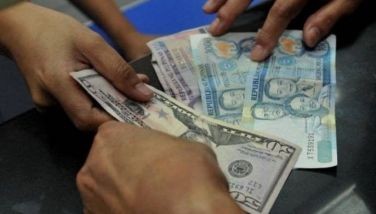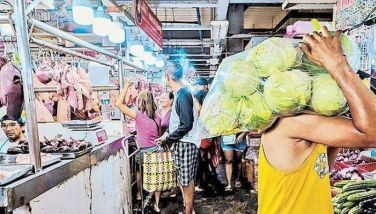RCEF to benefit other crop commodities
MANILA, Philippines — The implementation of the programs under the Rice Competitiveness Enhancement Fund (RCEF) is expected to benefit other crop commodities even if the primary intention is to boost competitiveness of the local rice industry.
Even if its primary focus is to help the rice industry be at par with Southeast Asian neighbors, RCEF’s mechanization component is expected to improve other cropping systems and help farmers deal with climate changes, according to the Philippine Center for Postharvest and Modernization (PhilMech).
PhilMech said a number of farm equipment to be distributed are crop neutral or could be used in cultivating other crops, like corn, cassava, and vegetables.
“Other impacts of the program may include cost reduction in using several mechanization technologies for other crops. It should be noted that some facilities included in the program are crop neutral,” PhilMech said.
Among the farm equipment that PhilMech will distribute to rice farmers are four-wheel farm tractors, hand tractors, tillers, rice seeders, transplanters, irrigation pumps, small solar irrigation systems, threshers, combine harvesters, mechanical dryers, and rice mills.
The four-wheel farm tractor could be attached with implements specifically designed for crops like corn and cassava, and PhilMech has already designed a cassava digger that can be towed by a farm tractor to facilitate the harvesting of cassava roots.
The Department of Agriculture-attached agency has also developed the corn picker that is attached to a four-wheel farm tractor and mechanically harvests matured corn cobs.
Meanwhile, PhilMech’s corn planter is attached to a farm tractor and could sow seeds and apply fertilizer simultaneously at a rate of 2.5 hectares in eight hours. Using manual labor, it would take one whole day to do the same task in just one hectare of land.
Apart from increasing the efficiency of rice farming, PhilMech sees the mechanization component helping farmers deal with the effects of climate change.
“Other potential quantifiable benefits are to prevent rice crop damages or losses due to weather risks such as tropical cyclones and prolonged rainy days. Machines such as combine harvester and mechanical dryer are found to be effective instruments in reducing the exposure of rice farmers to adverse weather,” it said.
Programs will be funded from the collection of tariffs slapped on imported rice, as stipulated by the Rice Tariffication Law.
The RCEF has a P10-billion budget annually until 2024. Of the P10 billion, P5 billion will be allocated for mechanization of rice farms, P3 billion for provision of high-yielding inbred rice seeds, P1 billion for credit support, and P1 billion for extension support and education of rice farmers.
The Philippine Rice Research Institute will lead in providing high-yielding inbred rice seeds to farmers, while the Agricultural Training Institute and Technical Education and Skills Development Authority will undertake the training of farmers and extension workers.
Meanwhile, Land Bank of the Philippines and the Development Bank of the Philippines will support the credit component of RCEF.
Studies showed that the cost of producing one kilo of palay in the Philippines is P12.72 per kilogram compared with the P6.22 in Vietnam and P8.86 in Thailand.
The components under the law can reduce the cost of producing palay in the Philippines by P1 to P3 per kilo.
- Latest
- Trending



























